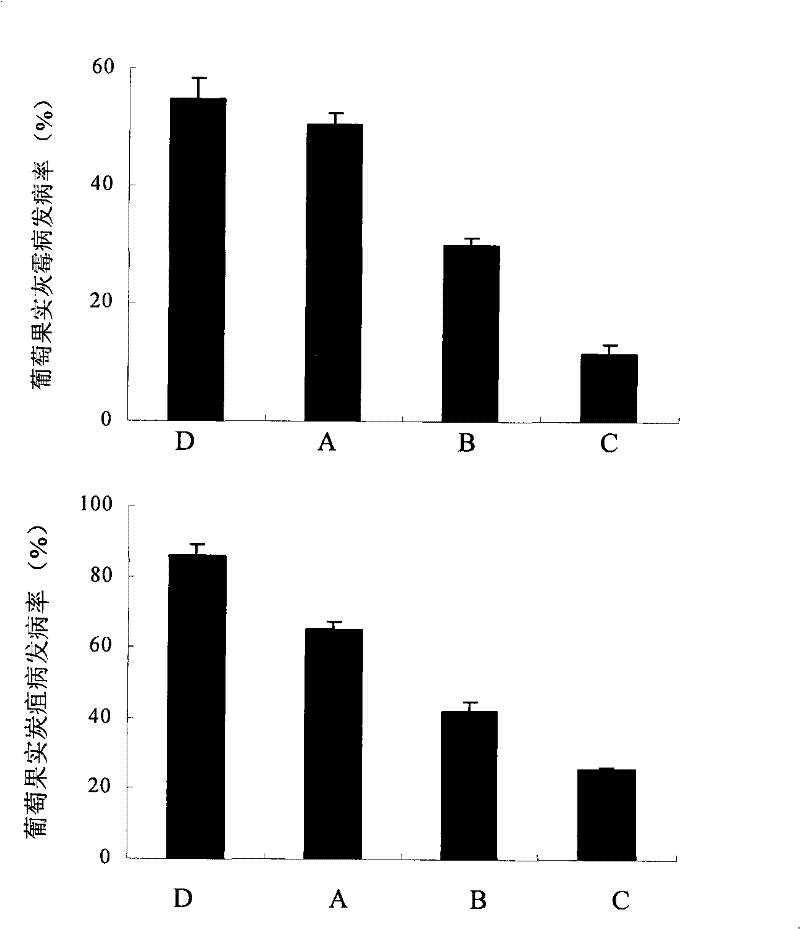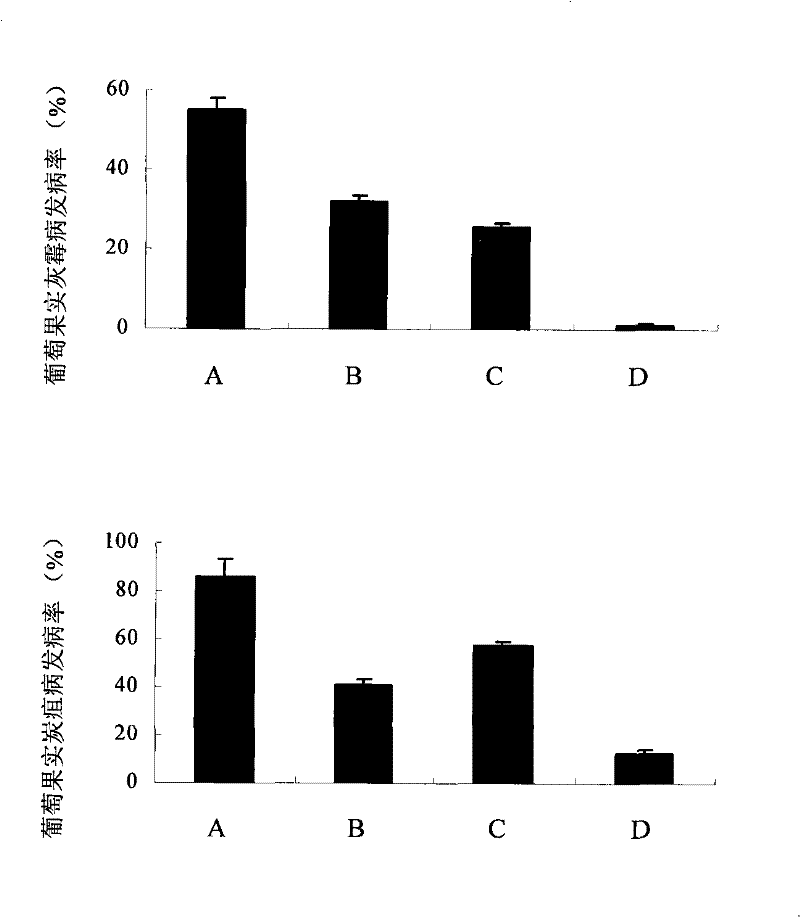Grape postharvest diseases or fruit abscission prevention and control method and special prevention and control agent
A post-harvest disease and control agent technology, applied in the field of prevention and control of post-harvest diseases or fruit shedding of fruits and vegetables and the field of control agents, can solve the problems of comparable, difficult disease control effects, etc., to reduce dosage, protect human health, and prevent the environment. The effect of pollution
- Summary
- Abstract
- Description
- Claims
- Application Information
AI Technical Summary
Problems solved by technology
Method used
Image
Examples
Embodiment 1
[0036] Example 1: Prevention and treatment of postharvest gray mold and anthracnose of grape fruit by sodium borate treatment at room temperature.
[0037] 1.1 Experimental materials
[0038] Fruit: Xinjiang seedless white grape fruit (Vitis vinifera L.cv.Wuhebai) was used as the test material. The fruit comes from Xinjiang. The fruit was pre-cooled at 0°C immediately after harvest, and transported to the laboratory of the Institute of Botany, Chinese Academy of Sciences by refrigerated truck.
[0039] Pathogens: Botrytis cinerea and Colletotrichumgloeosporioides, isolated directly from the surface of diseased fruit. The use concentration is 1×10 4 CFU / ml.
[0040] 1.2 Processing method
[0041] 1) The actual concentration of grape fruit is 1×10 4 CFU / ml soaked in the Botrytis cinerea solution for 10 minutes, and soaked for 15 minutes with the following control agents after the fruit surface was dried: A, 0.1% sodium borate aqueous solution; B, 0.5% sodium borate aqueous...
Embodiment 2
[0046] Example 2. The prevention and treatment of postharvest gray mold and anthracnose of grape fruit by sodium borate treatment at low temperature (0° C.).
[0047] 2.1 Experimental materials
[0048] Fruit: Xinjiang seedless white grape fruit (Vitis vinifera L.cv.Wuhebai) was used as the test material. The fruit comes from Xinjiang. The fruit was pre-cooled at 0°C immediately after harvest, and transported to the laboratory of the Institute of Botany, Chinese Academy of Sciences by refrigerated truck.
[0049] Pathogens: Botrytis cinerea and Colletotrichumgloeosporioides, isolated directly from the surface of diseased fruit. The use concentration is 1×10 4 CFU / ml.
[0050] 2.2 Processing method
[0051] After the grape fruit was treated according to the two methods in Example 1, it was stored at 0° C., and its disease state was observed after 3 days. The experiment was repeated 3 times, and 2.5kg of grapes were measured for each treatment.
[0052] 2.3 Experimental r...
Embodiment 3
[0055] Embodiment 3: 1% sodium borate aqueous solution is used for preventing and treating grape postharvest disease
[0056] Weigh 100 grams of sodium borate and prepare a 1% aqueous solution for later use. The experiment was repeated 3 times, and 2.5kg of grapes were measured for each treatment.
[0057] Take 2 kg of Xinjiang seedless white grape fruit (Vitis vinifera L.cv. Wuhebai), half of which is soaked in 1% sodium borate aqueous solution for 3 to 5 minutes, take it out, dry it naturally, put it in a carton, and leave the other half undisturbed. For any treatment, put them in the same carton and store them at a low temperature (0°C) at a relative humidity of 95%; observe the incidence of botrytis, anthracnose and white rot after 60 days. The results are shown in Table 1:
[0058] Table 1 The incidence of main diseases of postharvest grape fruits after sodium borate treatment (0°C)
[0059] deal with
Botrytis (%)
Anthrax (%)
White rot (%)
Tot...
PUM
 Login to View More
Login to View More Abstract
Description
Claims
Application Information
 Login to View More
Login to View More - R&D
- Intellectual Property
- Life Sciences
- Materials
- Tech Scout
- Unparalleled Data Quality
- Higher Quality Content
- 60% Fewer Hallucinations
Browse by: Latest US Patents, China's latest patents, Technical Efficacy Thesaurus, Application Domain, Technology Topic, Popular Technical Reports.
© 2025 PatSnap. All rights reserved.Legal|Privacy policy|Modern Slavery Act Transparency Statement|Sitemap|About US| Contact US: help@patsnap.com



